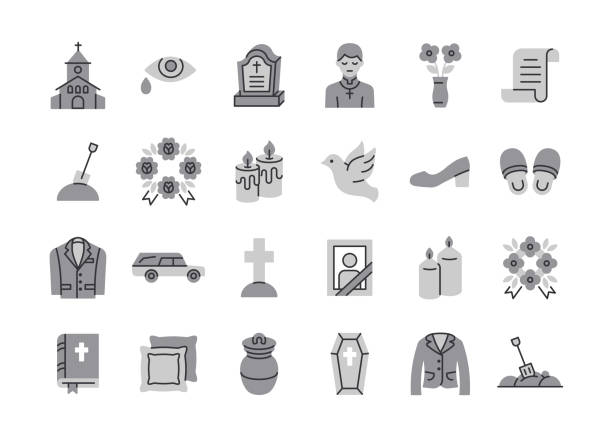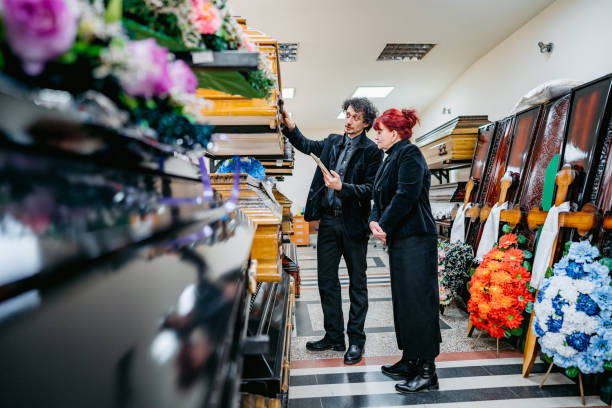Death is an inevitable part of life, and with it comes the responsibility of planning a funeral. One of the most significant expenses can be the cost of a coffin or casket.
The price can vary depending on personal tastes and preferences, materials, size, and personalization options. As such, it’s important to understand the different types of burial containers available, their costs, and customization options to make informed decisions during a difficult time.
This article serves as a comprehensive guide to coffin costs, covering everything from the types of containers available to the materials used, personalization options, and funeral home regulations. We’ll also explore the differences between coffins and caskets and provide resources for purchasing burial containers.
Whether you’re planning a traditional funeral or a green burial, understanding the costs and options available can help ease the financial burden and allow you to focus on honoring your loved one’s memory.
Types of Containers
Different types of burial containers are available to cater to different preferences and cultural variations. Traditional coffins and caskets are the most commonly used burial containers, made from wood or metal, and lined with padding and fabric. They come in various sizes, styles, and personalization options.
However, eco-friendly options are becoming increasingly popular, with biodegradable, toxin-free green burial containers being a viable alternative. These green burial containers are made from materials such as bamboo, wicker, and recycled paper, and feature simple designs that prioritize sustainability and environmental friendliness.
The cost of burial containers varies depending on the material, size, and personalization options selected. Traditional coffins and caskets tend to be more expensive, especially if made from exotic or luxurious materials. On the other hand, eco-friendly green burial containers are generally more affordable, though they may still feature some personalization options.
Despite the differences in cost and design, all burial containers serve the same purpose of providing a dignified resting place for the deceased.
Materials and Costs
Various options are available for burial containers’ materials, with some being more affordable than others. For example, pine and poplar are more budget-friendly options, while higher-end materials, such as mahogany and cherry, come with a heftier price tag. A family who opted for a solid oak casket for their loved one’s funeral can attest to this, as it is a solid, high-quality material with a reasonable price tag.
When it comes to burial containers, the choice between wood and metal is also an important consideration. Wood coffins and caskets are popular choices, with different types of wood offering various levels of durability and aesthetic appeal. Meanwhile, metal caskets are known for their durability and have a range of color and finish options. Semi-precious metals like bronze and copper are rust-resistant and expensive, while stainless steel caskets are comparatively more affordable and sleek. Standard steel caskets come in heavyweight, medium weight, and lightweight options, allowing families to choose based on their budget and personal preferences.
Personalization Options
One important aspect to consider when selecting a burial container is the availability of customization options, which can significantly impact the overall cost.
Embroidery design is a common personalization option on fabric parts of the coffin, allowing families to add a personal touch to their loved one’s final resting place. This can include adding their name, a special message, or even a favorite symbol.
Another way to personalize a coffin or casket is through the fabric padding options inside. Funeral homes typically offer a range of fabric-lined padding options, from basic to more luxurious materials. Families can choose from a variety of colors, patterns, and textures to create a unique and special final resting place for their loved one.
However, it is important to note that these stylistic features and personalization options do come at an additional cost, so it is important to consider them carefully when making decisions about burial arrangements.
Regulations and Rights
The funeral industry is highly regulated, and consumers have the right to protect themselves and their loved ones when making burial arrangements, as demonstrated by the Funeral Rule. This rule ensures that funeral homes provide consumers with clear and concise information about their services and pricing, allowing them to make informed decisions. The Funeral Rule also prohibits funeral homes from requiring consumers to purchase certain services or products, including burial containers, from them exclusively. Consumers have the right to purchase burial containers from third-party providers and only accept the services they want from a funeral home.
To further protect consumers, some states have casket sales restrictions in place, which prevent funeral homes from denying the use of a casket purchased elsewhere. These regulations promote transparency and competition in the funeral industry, ensuring that consumers are not taken advantage of during times of emotional distress. It is important for individuals to understand their rights and options when making funeral arrangements and to research different providers to find the best fit for their needs.
| Regulation | Description |
|---|---|
| Funeral Rule | Requires funeral homes to provide consumers with clear and concise information about services and pricing and allows consumers to purchase burial containers from third-party providers. |
| Casket Sales Restrictions | Prevents funeral homes from denying the use of a casket purchased elsewhere and promotes transparency and competition in the funeral industry. |
Providers and Resources
Providers of burial containers offer a range of options, with some specializing in eco-friendly and natural materials for green burials. For those looking for a more environmentally conscious option, there are providers such as Carolina Memorial Sanctuary that offer biodegradable burial containers made from materials like bamboo, willow, and sea grass. These containers are free of toxins and designed to decompose naturally over time, leaving behind a minimal environmental impact.
Consumers also have the option to purchase burial containers from third-party providers, rather than solely relying on funeral homes. Providers like Moss and Thistle Farms and The Old Pine Box offer unique and personalized options for coffins and caskets, such as woven willow caskets and simple, natural pine constructions. These providers often offer more affordable options compared to traditional funeral homes, while still providing high-quality and personalized products.
Overall, consumers have a variety of options for burial containers and can choose based on their personal preferences and values, whether that be eco-friendliness or affordability.


